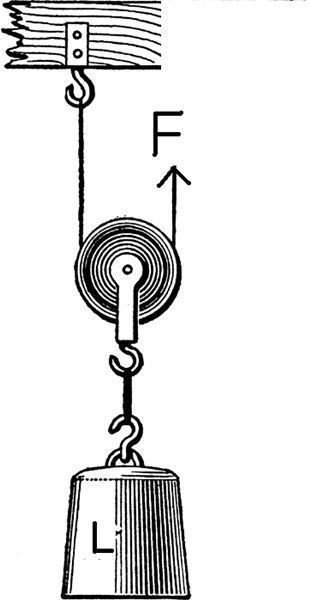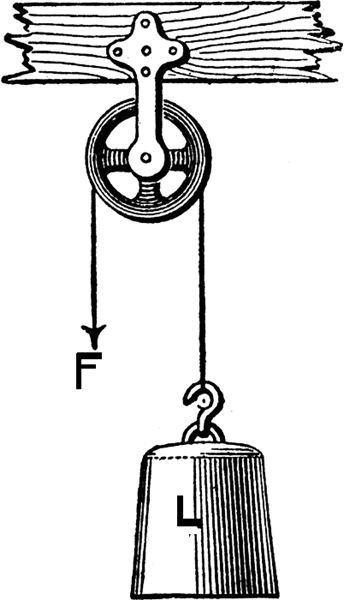Learn How a Pulley Works: Guide to Simple Machines
Vocabulary of Terms
A pulley, as we know is a type of simple machine that changes the direction of the applied force. But what does it look like? How can it be used? And how does it work? We will answer all these questions here, one by one.
Here is a vocabulary of the terms used in the study guide. These terms are italicised in the text.
Groove: a long, narrow cut made in a surface.
Hinge: a joint that holds two parts together so that one can swing relative to the other.
Pivot: the pin or center on which something balances and turns.
Input Force: The force applied by the person doing work.
Output Force: The force at the point of load.
Construction and Working
A pulley consists of
- A wheel which has a groove
- A belt or rope that runs inside the groove of the wheel
In a simple pulley, on one end of the rope or belt is a **load (**L) and the other end is left free to apply force (F). The diagram on the left shows a Fixed Pulley.
The working principle of the pulley is:
When one end of the rope is pulled downwards, the load on the other end of the rope is pulled upward.
Therefore, the direction of force is changed from downwards to upwards!
Fixed and Moving Pulleys
A Fixed Pulley: When a pulley is hinged to a fixed support, it is a fixed pulley. A fixed pulley does not mean that it cannot move. It just cannot move up and down with the rope, but it it is free to rotate around the fixed pivot. The figure above shows a fixed pulley.

A Movable Pulley: When a pulley is free to move up and down along with the load, it is called a movable pulley. This pulley can also rotate like the fixed pulley. The pulley shown in the figure on the right is a movable pulley. When a upward force, F is applied by the hand, the movable pulley moves up alongwith the load L.
A single fixed pulley can be used to change only the direction of the applied force. However, a movable pulley can be used to decrease the input force required.
Mechanical Advantage
Work done in a task is the force applied multiplied by the distance over which it was applied. The work required to complete a particular task is fixed. Machines provide us a mechanical advantage by decreasing the input force but increasing the distance.
Mechanical Advantage = Output Force/Input Force
A mechanical advantage of 1 means that the input force is equal to the output force. A mechanical advantage greater than 1 means that we can accomplish the work with lesser force but exerting it for a greater distance.
A single fixed pulley, as we saw, can change only the direction of the input force and not the amount of it. Input force is equal to the output force. For this case the mechanical advantage is 1.So, there is no mechanical advantage, although the work has become easier now.
The arrangement of movable pulley given above gives a mechanical advantage of 2. This means that the weight of the object is twice the force required to pull it up using this arrangement. Greater advantage can be obtained using more pulleys.
Examples of Pulleys
Pulleys are used for drawing water from a well. A crane uses a pulley to lift heavy loads. An elevator uses a pulley to lift people. It uses a counterweight on the the other end to do this.
This simple machine is put to numerous applications in our daily world, though mostly not in its crude form. A combination of several pulleys is used to accomplish complex tasks.
This post is part of the series: Simple Machines Study Guides
The complete study guide on Simple Machines for 4th graders.
